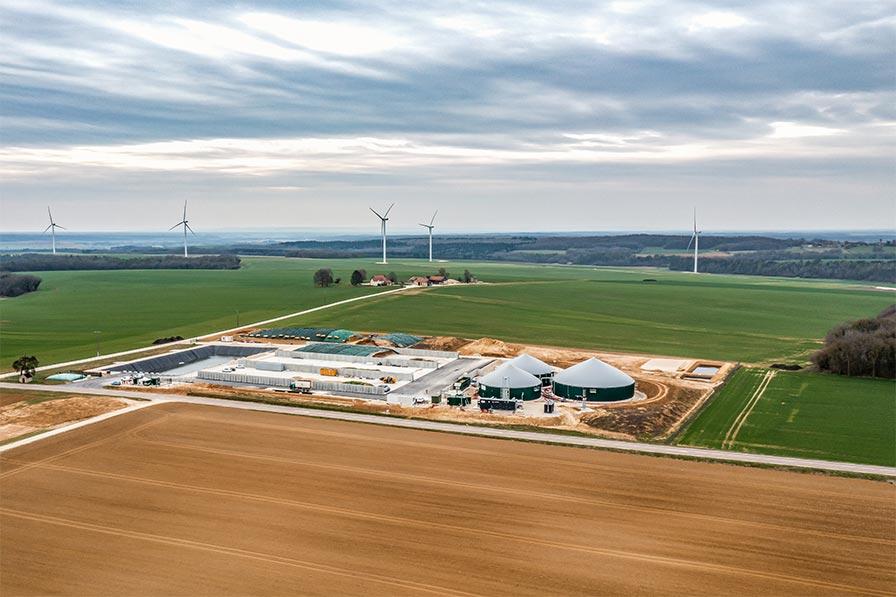For the French Energy Regulatory Commission (CRE), the gas infrastructure will remain crucial to achieving carbon neutrality by 2050

Will we still need the current gas infrastructure in 2050, when France has reached carbon neutrality? The CRE gives a clear answer to this question in its report entitled “The future of gas infrastructures by 2030 and 2050, when carbon neutrality is achieved”. Here, it forecasts a decarbonised future in which the transmission, distribution and other gas infrastructure networks will continue to play a decisive role. They are even seen as key factors in ensuring a successful transition and guaranteeing France’s energy sovereignty by the middle of the century.
To arrive at these conclusions, the CRE – France’s leading independent administrative authority on energy issues – projected the impact of three gas production and consumption scenarios on the gas infrastructure by 2030 and 2050, respectively.
The first two scenarios proposed by the French Environment and Energy Management Agency (ADEME) predict gas consumption of 165 and 245 TWh by 2050. The third scenario, projected by the network operators including GRTgaz, is based on a consumption of 320 TWh.
In any event, France will still need gas networks. But the challenges ahead are significant: “Energy network infrastructures (...) will have to accommodate new decarbonised sources of production, adapt to new consumption profiles, and, in the case of gas infrastructures, cope with a reduction in consumption.” The CRE confirms in its analyses that renewable gas will play a major role in the energy transition. The independent authority estimates that no more than one cubic metre of fossil natural gas will be in circulation by 2050. Annual gas consumption will therefore be entirely covered by renewable gases. For GRTgaz, this report confirms the future of the anaerobic digestion sector and other renewable gas sectors, such as pyrogasification or hydrothermal gasification.
hree key takeaways from the report
The CRE concludes that in a future without gas of fossil origin, the transmission network will remain as useful as ever. In particular, it will make it possible to deal with imbalances between production and consumption and to ensure flexible supply with the interconnection of storage facilities, as well as transit flows to neighbouring countries. However, the transmission network must be adapted to the widespread use of renewable gas, the production of which will be dispersed throughout the country. And it must also factor in the general reduction in consumption. “We will always need our large transmission network, both to be safe in terms of security of supply and state-of-the-art management, and because we are a transit country,” summarises Emmanuelle Wargon, President of the CRE.
The main transmission network will a remain strategic, appropriately-sized infrastructure. Only 3-5% of the pipes and at least seven compressor stations (i.e. 27% of the current number) will be “cleared for release”. The released pipes could then be reused to develop a hydrogen transmission network, the CRE clarifies. Renewable and low-carbon hydrogen is expected to play an increasing role in the French energy mix in coming years. Cross-border transit needs alone justify maintaining 2-3% of total pipelines.
The need for investment in the gas infrastructure to integrate the transition to 100% renewable gas is estimated at between €6-9.7 billion by 2050, i.e. €200-300 million per year. The figure is relatively limited compared to the current level of investment made by network operators, including GRTgaz (€1.3 billion per year), and “of an order of magnitude well below the amounts needed to adapt the electricity networks to accommodate renewable production,” the report states. This low adaptation cost gives renewable gases an added advantage.
The CRE calls for the interconnection between the different energy networks to be taken under consideration. The degree of complementarity between the gas system (low-carbon CH4 or H2) and the electricity system by 2050 is yet to be defined. It will depend on the electricity mix and the decisions made in terms of heating.
The report is of course concerned with other facets of the gas infrastructure. The CRE anticipates decreasing gas storage needs. Storage will be used to cover peak consumption needs more than seasonal changes, as is the case at present. Salt cavities, one of the forms of underground storage, could be converted to provide dedicated hydrogen storage in the longer term. Finally, a future without fossil natural gas does not mean abandoning LNG terminals. France has four such terminals, and a floating storage regasification unit under construction in Le Havre. The CRE believes that these will continue to play a role in the security of supply until at least 2040, in transit with neighbouring countries and in response to any major contingencies. They could also be used for the export of CO2 or for the import of hydrogen, methanol or ammonia.
What next? How will the CRE report be used?
The report was produced at the request of the Directorate General for Energy and Climate (DGEC), attached to the French Ministry for the Ecological Transition. It will help to produce the next Multiannual Energy Plan (PPE 3, 2024-2033) and the National Low-Carbon Strategy (trajectory for reducing GHG emissions until 2050) – both official plans in France’s energy transition strategy. It will also enable the CRE to adapt the commercial and regulatory provisions for gas infrastructures.